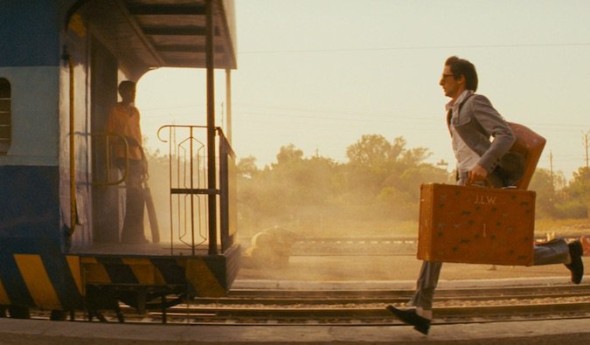December 29, 2017
Finding Liturgy in the Vintage Store

The interest in traditional liturgy that has arisen among Millennial evangelicals can be a double-edged sword. Why? Because it can, if we are not careful, compound the very problem it is attempting to resolve.
What’s that problem? The church expression that is all style over substance that many Millennials (among others) are rejecting in spades. The “church-lite” that is ill equipped for spiritual formation in our hardening secular frame.
This return to liturgical forms of worship interests me, as in my own congregation we are holding fast to a liturgical frame – self consciously so -, that walks the congregation from a call to worship through to a sending out into the week “in peace to love and serve the Lord”. And we’re doing that to a historically non-liturgical congregation, primarily low evangelicals, de-churched people and some non-Christians.
So we have opening readings and prayers, Scripture readings, songs that are framed by the teaching of the day, expository preaching, prayers of confession, communion (every week, and come up the front to get it), the “long prayer” and a sending out.
We’re self-consciously shaping our community as one in which the Christian liturgical frame is both present in church, and in which the rest of the week is shaped by what it commands of us, and promises to us.
The desire for liturgical forms of worship that are structured, ancient and formal, steeped in Scripture and Church Fathers, is commendable if the desire is for that liturgy to shape community life together, rather than being a new form of aesthetic and preference for a consumer-driven culture.
But if all this is is a reflection of the “hipster magpie” making serendipitous finds in the vintage store alongside the 78 records then it’s highly suspect. Taking a piece from this era, an object from that era, and blending it all together to form one’s own “authentic experience”, completely divorced from the values and frame of the cultures and eras from which these things are taken, simply means that yet again style has indeed trumped substance.
In other words, as Jamie Smith points out, the point of all liturgy is to embed itself as practice in our communal lives. But if the practice of our individual lives is to be a private consumer then, ironically, a return to liturgy can mask such a practice with the appearance of worship.
In an essay entitled “Liturgical Piety” contained in the TGC collection “Our Secular Age: Ten Years of Reading and Applying Charles Taylor”, Alistair Roberts makes this point precisely:
Even the return to traditional liturgy that one finds in some circles can be driven by the same underlying forces of expressive individualism. Rather than a submission to authority, tradition can be an attractive consumer choice for those in search of “authenticity” in a society where many options on offer seem to lack the weight and beauty of long established custom. Attending a church with a higher liturgy can be a worshipper’s means of signalling refinement, elevating aesthetic judgement, establishing pedigree and socio-economic class. In such cases tradition may be valued principally for its vintage feel or ancient dignity, rather than for the truth that first animated its creation.
This was precisely the problem that the emerging church encountered when X-ers, sick of the Boomer driven seeker-sensitive church experience, rediscovered candles, darkened rooms, and Gregorian chants. The fact that the emerging church submerged again, its adherents either returning crest-fallen to the mainstream churches, or continuing on their path out of Christianity altogether, is a cautionary tale to the new generation that views ancient liturgy as the solution.
Roberts goes on to make this prescient point:
Within the age of authenticity, we can approach Christian liturgy chiefly as a means of self-expression, and forget its character as communal action and formation. While many speak of their desire for “community” the community they seek is often of an ersatz character, participating only in the shallow and fleeting “community” that can be enjoyed in the “lonely crowd”. Churches can attempt to achieve “community” through affected informality and friendliness or through the elevated emotions of the music-driven worship event…We have identified community with a feeling that can be synthesised, rather than a bond of deep mutual commitment and the shared disciplines that powerfully and enduringly unite us in the pursuit and celebration of common objects of love.
In other words, Millennials (and anyone else), who return to ancient liturgies, but who are shaped uncritically by modern secular liturgies of self-expression, autonomy and the individual as shaper and decider, are using such ancient worship expressions to hide an even more ancient expression of worship – self worship.
That’s why going to a liberal mainline cathedral, the music and liturgical drama of which can make one’s heart soar, is no more disciplining and spiritually forming than a rock concert.
If, at the end of such a service we are told to “go in peace to love and serve the Lord”, yet there is nothing else in the life of that Christian community that says we are not our own lords and that we were bought with a price by the one true Lord, then it’s been a complete waste of time. A beautiful waste, no doubt if that is your aesthetic, but a waste nonetheless.
For us a liturgical approach to God’s community means that our pastoral care is shaped by the truth of those words, our approach to church discipline is too, as is our call to serve God through our work and our lives and our sex and our forgiveness and our hospitality and our…. the list goes on.
For if all liturgy is – whether ancient or modern – is a beautiful jewel to be adored and stared at, a mere aesthetic experience whose afterglow fades away by Monday morning, then we may as well stick to the withered and anaemic church-lite we’ve been unfortunate enough to had lumped on us these past five decades.
Written by
There is no guarantee that Jesus will return in our desired timeframe. Yet we have no reason to be anxious, because even if the timeframe is not guaranteed, the outcome is! We don’t have to waste energy being anxious; we can put it to better use.
Stephen McAlpine – futureproof
Stay in the know
Receive content updates, new blog articles and upcoming events all to your inbox.


